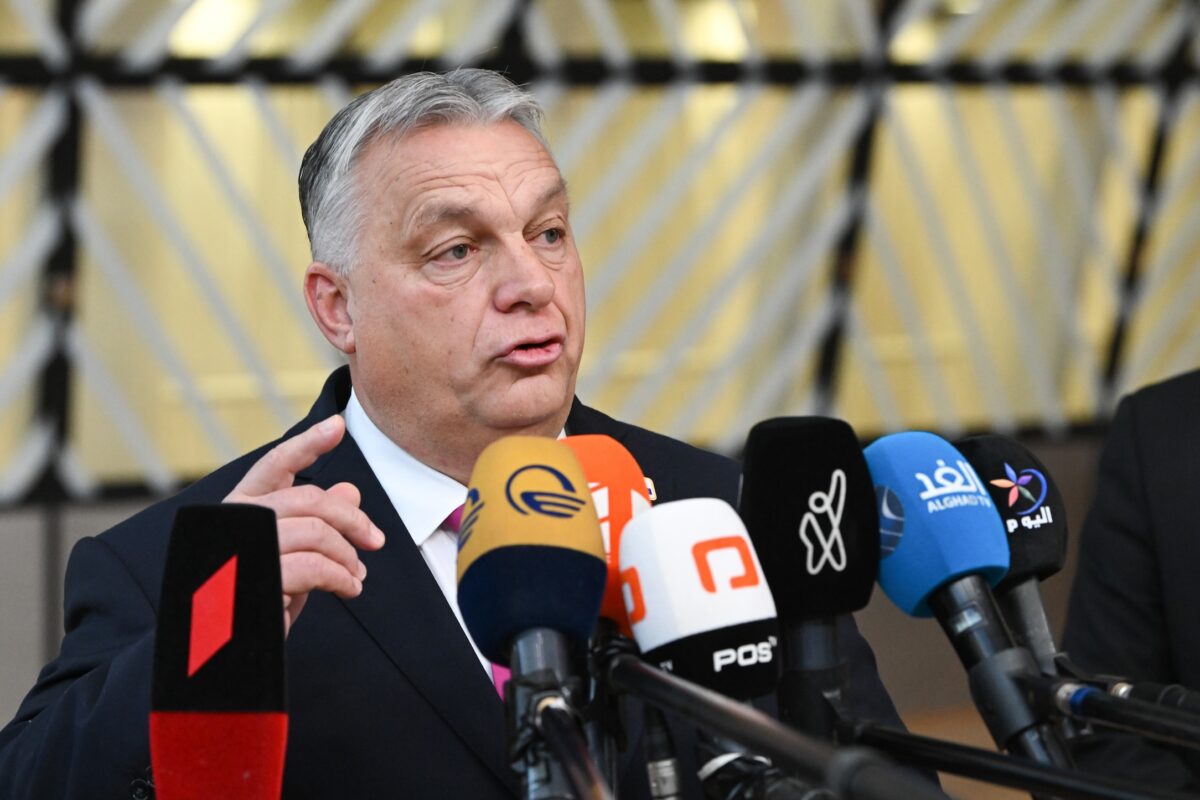While the European Parliament election results caused domestic political earthquakes in countries like France or Germany through the strong performance of radical right parties such as the Rassemblement National (RN) in France or the AfD in Germany, in Hungary, ruled for 14 years by Prime Minister Viktor Orbán’s radical-right Fidesz party, the disruption to his semi-authoritarian rule came from the political centre.
The emergence of the Respect and Freedom party (Tisza) of former Fidesz bureaucrat Péter Magyar, husband of former Justice Minister Judit Varga, in less than four months since February sent shockwaves through the Hungarian party system.
Capitalising on the political opportunity created by the clemency scandal of a convicted pedophile accomplice in January-February 2024, which led to the resignation of former Hungarian President Katalin Novák and Fidesz’s top candidate for the European Parliament elections, Judit Varga, Péter Magyar successfully created a new anti-regime movement and party focused on centre-right, middle-class voters and pursuing a strong anti-corruption narrative.
While the rising popularity of Magyar’s Tisza party was widely perceived as a serious threat to Fidesz and the Orbán regime, in light of the election results one could rather conclude that Magyar instead wiped out Hungary’s existing opposition.
Fidesz received 44.72 per cent of the votes cast (7.86 per cent less than in 2019) and secured 11 European Parliament mandates, two MEPs fewer than in 2019. But while these losses for Fidesz are widely perceived as a sign of declining popular support in Hungarian society, this conclusion is actually unfounded. The incumbent party actually received almost 200,000 more votes than five years ago, but due to the record high voter turnout (59.36 per cent vs. 43.48 per cent five years ago), Fidesz’s relative support plummeted.
Tisza, a newcomer party, won 29.63 per cent and 1.34 million votes with a campaign largely focused on domestic politics and the desired regime change, resulting in seven seats in the European Parliament. This came at the expense of the liberal Momentum party, a Renew Europe member that previously held two seats, which was wiped out of the European Parliament, and the joint list of progressive-left parties led by former Prime Minister Ferenc Gyurcsány’s Democratic Coalition, which was effectively halved, achieving only 8.09 per cent and gaining two seats, compared to 16.05 per cent and four seats in 2019.
These results show that the overwhelming majority of voters supporting Péter Magyar’s party came from the core opposition electorate, and only a minority of them are previously undecided or Fidesz voters.
The share of the far-right being largely unaltered, the party Our Homeland achieving one European Parliament mandate just as Jobbik did in 2019, it is fair to conclude that there was a slight shift in the relative support of parties from Fidesz to the new Tisza party, mainly due to the higher mobilisation and turnout and at the expense of the traditional Hungarian opposition parties.
These results certainly did not shake the stability of Fidesz rule. The 2024 Hungarian European Parliament elections made it clear however that Péter Magyar and his Tisza party will be PM Orbán’s main challenger at the 2026 general elections, if the party successfully masters the institutionalisation challenges it will face in the foreseeable future.
The election results will also serve as a wake-up call for Fidesz to further consolidate or expand its electoral base in response to the challenge posed by Magyar. Orbán may have both the resources and the time to adapt to the new political realities. He is certainly not the winner of this election, but neither is he the loser. The winner is Péter Magyar, while the loser is Hungary’s traditional opposition.
European party tango
Except for the clear demand to join the European Public Prosecutor’s Office, initially the European and foreign policy agenda of Tisza did not differ much from the talking points of Fidesz, advocating a Europe of nations, distancing itself from support for Ukraine and talking about the need for immediate piece with Russia.
This started to change in the last days of the campaign, probably not independently from the ongoing talks between Manfred Weber and Péter Magyar about the future European People’s party (EPP)-membership of Tisza. Respect and Freedom joining the European People’s party would have strategic advantages for both sides. Péter Magyar would be able to claim that his party, and not Fidesz, is the true representative of European conservatism in Hungary, with Tisza able to occupy the former place of Fidesz in the EPP.
For Weber, the odd situation of the EPP not having a proper Hungarian member party would finally be over, and the additional seven Tisza MEPs could further increase the number of EPP seats. However, the former anti-Ukrainian position of Tisza is clearly incompatible with the EPP line, so the admission of Tisza to the largest European party family could also have significant positive impact on the Europeanisation of its policy positions as well.
Fidesz’s prospective membership in the European Conservatives and Reformists (ECR) group, led by Giorgia Meloni’s Fratelli d’Italia, appeared to be a rather smooth, if not entirely certain deal before the European Parliament elections. The election results may have a minimal impact on the accession process; a weaker Fidesz is even a more comfortable partner for Meloni than a strong, self-confident one, which is even harder to keep under control.
However, the dissolution of the French National Assembly and the upcoming snap elections, which could easily lead to a French government led by Jordan Bardella and a cohabitation between the Rassemblement National (RN) and Emmanuel Macron, will put any other moves by the European radical right on the back burner. The possible entry of the RN into government could significantly influence the composition of the European radical right. Until this question is settled, it is unlikely that Fidesz’s ECR membership could enjoy much attention and priority.
Hungary’s municipal elections
Parallel to the European Parliament elections, Hungary also held local elections on June 9. These showed a slightly different dynamic in the relative absence of Péter Magyar’s Tisza Party, which was unable to field a significant number of local candidates outside Budapest due to lack of time.
As for the larger cities outside Budapest, the opposition and independent candidates largely repeated their 2019 success, capturing 11 of the country’s 23 larger cities. The big open question is the future leadership of Budapest, both in terms of the person of the mayor and the work of the City Council. The incumbent mayor of Budapest, Gergely Karácsony, won by only 324 votes against Dávid Vitézy, the supposedly independent candidate nominated by the Green Party LMP, but ultimately also supported by Fidesz.
A recount of the votes seems certain, which could also affect the election result. As far as the composition of the Budapest City Council is concerned, the results created a tie or Mexican standoff between Fidesz, the Tisza party (each with 10 representatives in the council), the opposition coalition (seven representatives), the Vitézy list (three mandates) and the alternative Two-Tailed Dog party (three mandates).
Regardless of the outcome of the mayoral race, neither Karácsony nor Vitézy can expect a majority in the City Council, with Tisza largely playing the role of kingmaker. This stalemate certainly means the end of opposition-dominated local politics in Budapest. Whether it will be replaced by rational compromise among the political factions in the City Council or paralysing chaos remains to be seen. In any case, the removal of Karácsony or the deprivation of his ability to govern the city effectively is a clear victory for Fidesz.
Photo: Viktor Orbán arriving a meeting of the European Council earlier this year. © European Union.







